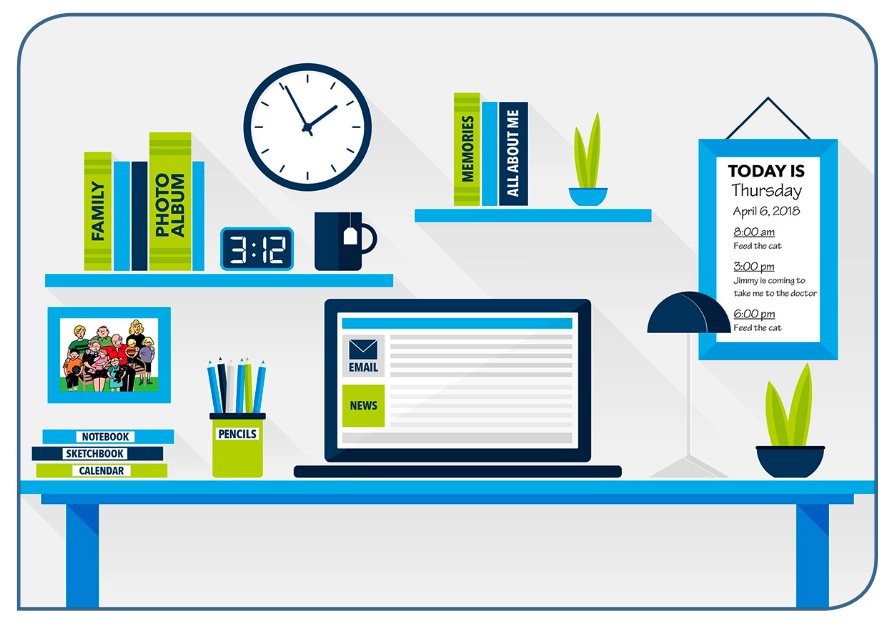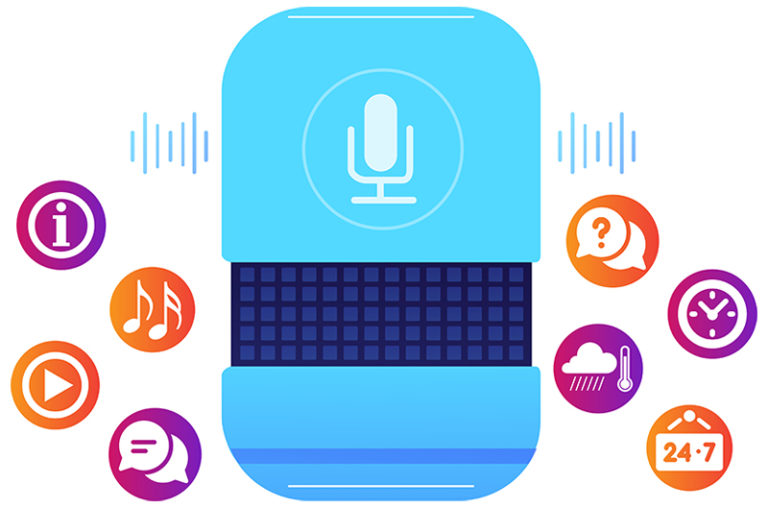Creating a Home Memory Center
by Jennifer Brush and published by the Ohio Council for Cognitive Health
Creating a memory center in the home can create a sense of security and reduce anxiety because the person knows just where to look for important information.
Simple, low-cost changes can be made to help people living with cognitive impairment to be more independent. Cognitive impairment makes individuals feel more anxiety and stress, become more sensitive to their physical and social environments, and rely more on their senses for cues about what is going on around them. Where items are placed in the home can have a big impact on someone with dementia. Memory loss, confusion, and difficulty problem solving means that someone with cognitive impairment may forget where they are, what to do next, where things are located, or how things work. Creating a memory center in the home can create a sense of security and reduce anxiety because the person knows just where to look for important information. This will help decrease repetitive question asking, as well as allow the person to have a sense of agency in his or her own life.
A memory center uses cues such as pictures, words, or auditory reminders to compensate for memory loss and lets the person focus on what he or she can do, rather than calling attention to what they can’t do. Once you create a memory center in your home, with practice, it will become the go-to place for important information such as the time, date, lists of things to do, daily schedules, and visitors for the day.
What you can do!
Step 1:
Choose a place that is in a central, frequently used location in the home. For most families, this tends to be the kitchen. Choose an area where you can place a small table or use an area of the counter.
Step 2:
Clear out the clutter. There should be nothing there except for what is intentionally placed to create the memory center. Piles of mail, stacks of magazines, and old receipts are going to be distracting and confusing for the person.
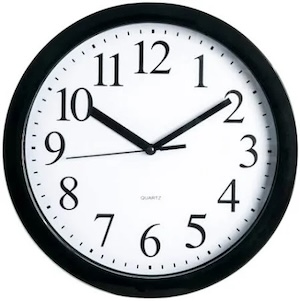
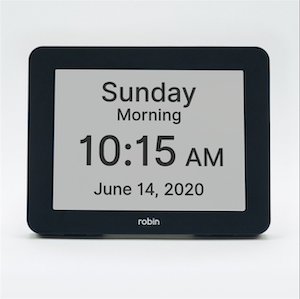
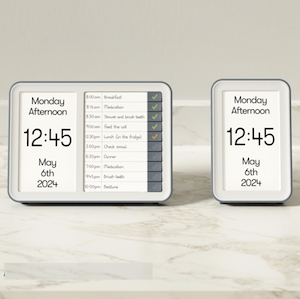
Step 3:
Place a large, easy-to-read digital or analog clock on the wall at a height that is easy to see. Look for an analog clock with Arabic numbers because they are easier to read than Roman numerals. If you aren’t sure which to choose (digital or analog), pick the type of clock that your loved one is accustomed to using.
Step 4:
On the table or counter, place a simple, large desk calendar with minimal designs or pictures. Or, use a memo board with a dry erase surface that already has a place for a calendar, notes, and daily schedule. If a monthly calendar becomes overwhelming, try switching to a weekly or even daily schedule instead.

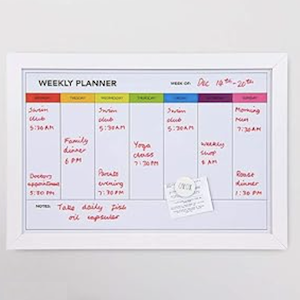
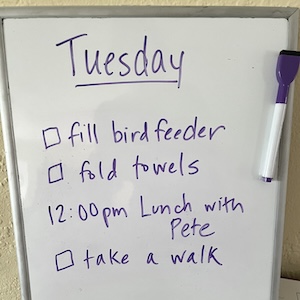
Step 5:
Place pens and an 8 ½” x 11” lined notepad next to the calendar for taking notes during phone calls or writing reminders.
Step 6:
Consider purchasing a new telephone. There are many phones designed for older adults and/or for people with hearing loss. It may be helpful to purchase a phone that is equipped with a speakerphone because it allows a person with a hearing aid to use the phone without the risk of feedback. Phones with large buttons are ideal for people with low vision or limited fine motor abilities. There are also phones with memory buttons that can be pre-programmed and dialed with the touch of just one button. This is ideal for people with mild memory problems. Picture phones have room for a picture of the person next to the memory dial button. This is best for people with significant memory issues.
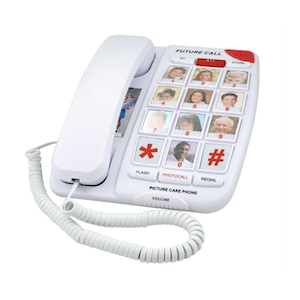

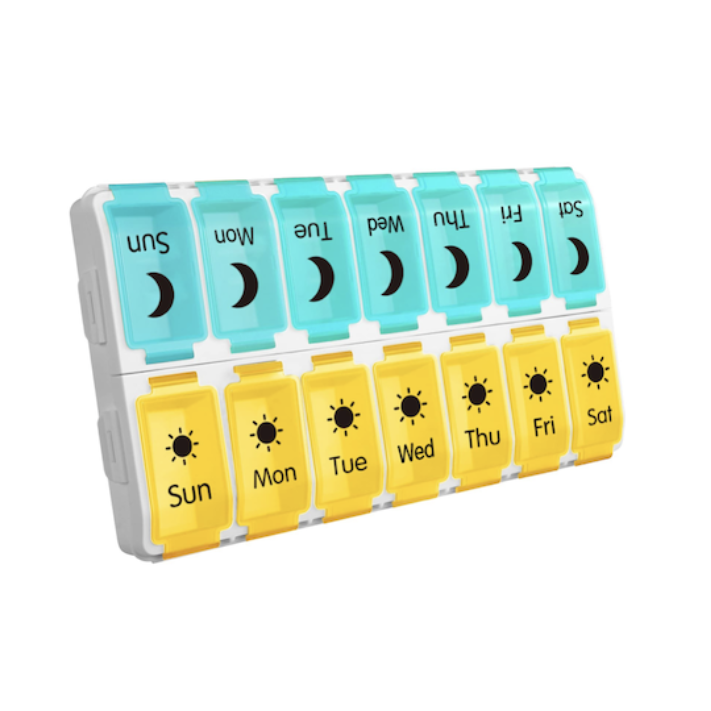
Step 7:
Organize all medication in clearly labeled pill boxes and fill on the same day each week. For example, each Sunday night, fill the medication box for the week.
Step 8:
Gather all important health information for all individuals living in the household and place it in a red folder labeled “In Case of an Emergency.” Make sure the information includes all medical diagnoses, such as Alzheimer’s disease, medication, physician name and number, allergies, etc. List the name and number of an emergency contact to be called if the caregiver of the person with dementia is taken ill.
Practice Using the Memory Center
Make routine trips to the Memory Center to read the list of events throughout the day with the person who has cognitive impairment to create a habit of always checking.
If the person asks questions repetitively about the day’s schedule, do not tell him the answer. Instead say, “Let’s go to the memory center and find out.” Then, ask the person to read the information about what he is seeking. Do this repeatedly to help develop the new habit. Place an “x” over the day when it is done to decrease confusion as to what day it is. If a full calendar is too much, just write the events or chores of the day on a space on the white board labeled “Today’s Events.” Leave simple notes about important topics, such as “John will visit Tuesday.” If a person often asks when his son is coming to visit.
The memory center needs to strike a balance between providing the needed information and not looking visually cluttered, so keep it simple.

